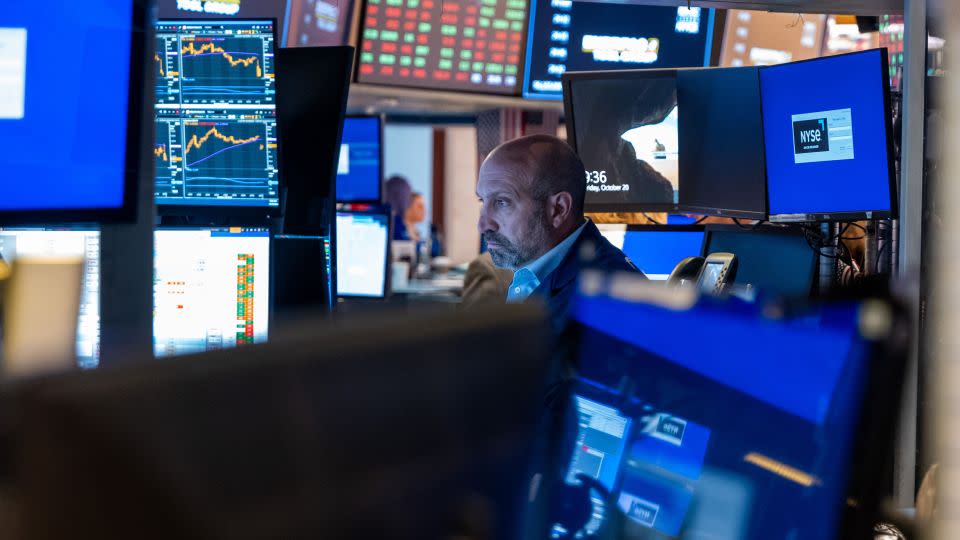A time-honored investing strategy is under pressure. But don’t panic

A version of this story first appeared in CNN Business’ Before the Bell newsletter. Not a subscriber? You can sign up right here. You can listen to an audio version of the newsletter by clicking the same link.
An age-old investing strategy is losing its shine, but investors aren’t ready to cast it aside.
The 60-40 strategy, in which 60% of a portfolio is invested in stocks and the other 40% in bonds, is a popular investing blueprint touted as a reliable method of diversification, particularly for those saving for retirement. The reasoning behind that mix is that a rise in bonds will help cushion the blow when stocks fall, and vice versa.
Common wisdom suggests that when investors are fearful, stock prices tend to fall, and bond prices rise as people seek safer investments. But when investors are feeling greedy, riskier stocks tend to bring higher rewards, making even high-yielding bonds look less attractive by comparison.
But stocks and bonds both tanked last year, as the Federal Reserve aggressively hiked interest rates to tame wayward inflation that touched a four-decade high. Bonds sold off as yields rose and eroded the value of bonds issued at lower rates, and stocks slid as investors feared that a rapid hike in rates from near-zero levels could plunge the economy into a recession.
Now, Wall Street is grappling with the prospect of higher-for-longer rates as the economy and labor market show little sign of cooling. That’s led yields soaring to their highest levels in over a decade. When yields rise, bond prices fall, and Treasuries have been sinking in recent months. Stocks have also given up a chunk of their 2023 gains. Those are characteristics of the perfect storm that sent the 60-40 portfolio nosediving in 2022.
The 60-40 portfolio shed roughly 17% last year, its worst performance since 2008, according to data from Vanguard. This year, the portfolio is hanging onto a roughly 6% return.
Some investors say it’s unlikely that last year’s carnage will repeat itself.
“Even though we have seen negative returns on bonds again this year, we probably have seen the worst of the damage,” said Amy Arnott, a portfolio strategist at Morningstar.
The 10-year Treasury yield topped 5% last week, its highest level since 2007, after Fed Chair Jerome Powell indicated in a speech that monetary policy is not yet restrictive enough to tamp down inflation to the central bank’s target. Since then, the benchmark yield has dipped below the key 5% level but remains elevated.
Brian Henderson, chief investment officer at BOK Financial, recommends that investors using the 60-40 strategy not abandon it, but consider adding to their cash allocation in the short-term to take advantage of attractively high interest rates.
“I’m more optimistic because of the rise in yields on the bond side that a 60-40 will do better,” said Henderson.
Auto strike now the longest in 25 years
As of Wednesday, the unprecedented strike by the United Auto Workers union against General Motors, Ford and Stellantis is the longest American auto strike in 25 years, reports my colleague Chris Isidore.
The last time the union struck one of the automakers, with its 2019 strike at GM, the strike lasted 40 days. Wednesday was the 41st day of the strike that started on September 15.
The strike at Ford could be nearing its end after the carmaker and the United Auto Workers reached a tentative deal late Wednesday.
But it is likely that the strike will continue at the other two companies while the ratification process for the Ford deal takes place.
This strike is the first time the union has walked out at all three automakers at the same time. But it didn’t flex its full muscle immediately, instead conducting a targeted strike, picking select factories and facilities for the strike to disrupt company operations and put escalating pressure on the companies.
The strike is likely to go on for at least a few weeks longer.
Inflation is cooling, but the price hikes aren’t done
In 2021, when the price of organic cotton and other raw materials spiked, the family that runs White Lotus Home, a New Jersey-based sustainable bedding company, hoped the 20% to 25% jumps were merely momentary and opted to absorb most of the costs.
But earlier this month, Marlon Pando, White Lotus Home’s chief executive, emailed customers to explain that the 42-year-old company could no longer afford to do so, and that prices would go up in 2024.
Inflation in the United States has unquestionably cooled after hitting 40-year highs last year, reports my colleague Alicia Wallace.
However, recent inflation gauges, the actions of small businesses like White Lotus Home, and the broad-based announced price hikes by large entities like Chipotle and Disney, reinforce what Federal Reserve Chair Jerome Powell and others have repeated for months: Disinflation will be bumpy.
However, the longer that process drags on, consumers’ patience — and, in some cases, their pocketbooks — are wearing increasingly thin.
For more CNN news and newsletters create an account at CNN.com

 Yahoo Finance
Yahoo Finance 